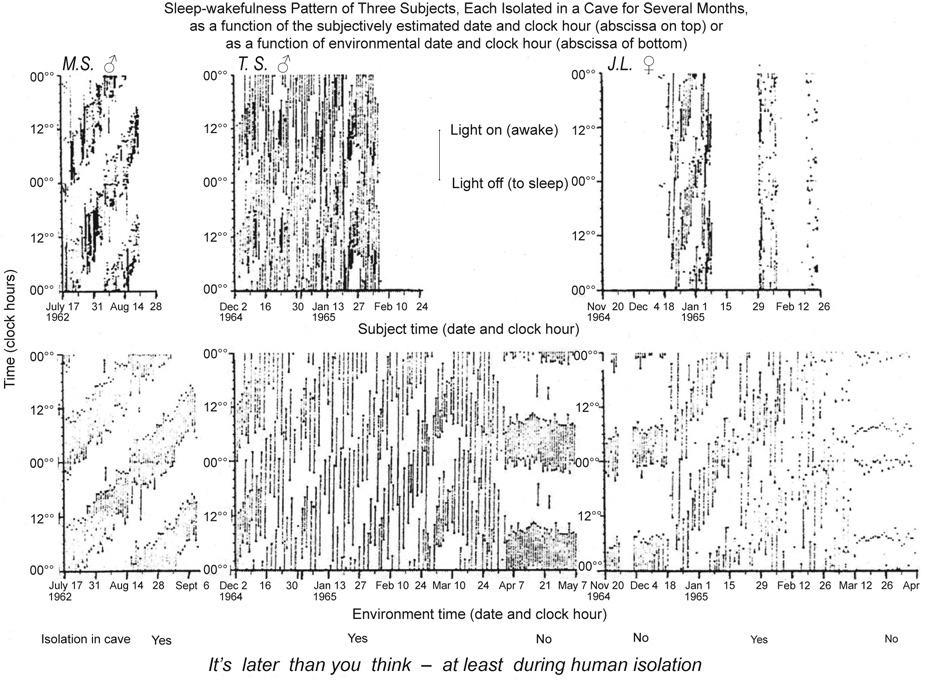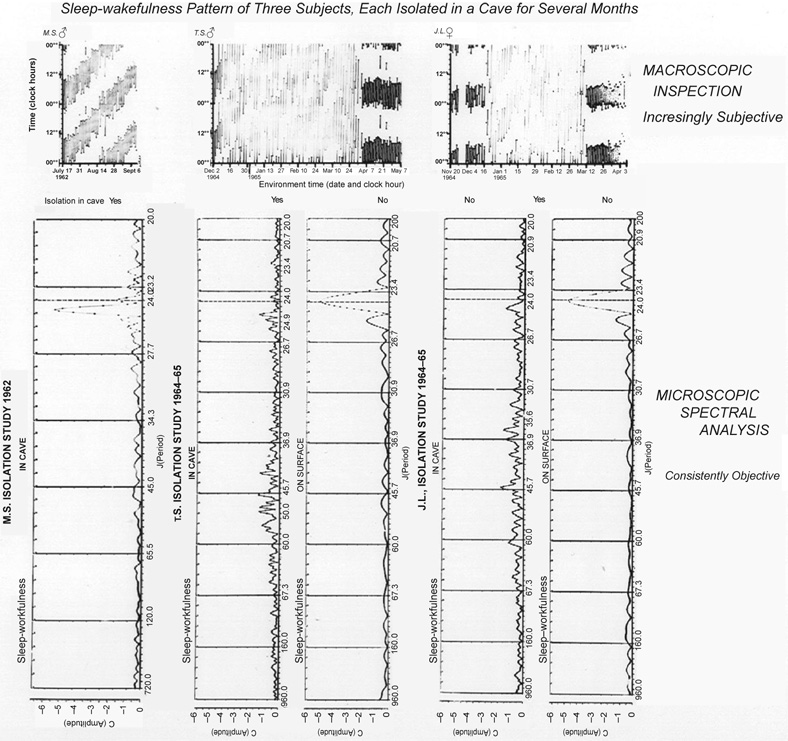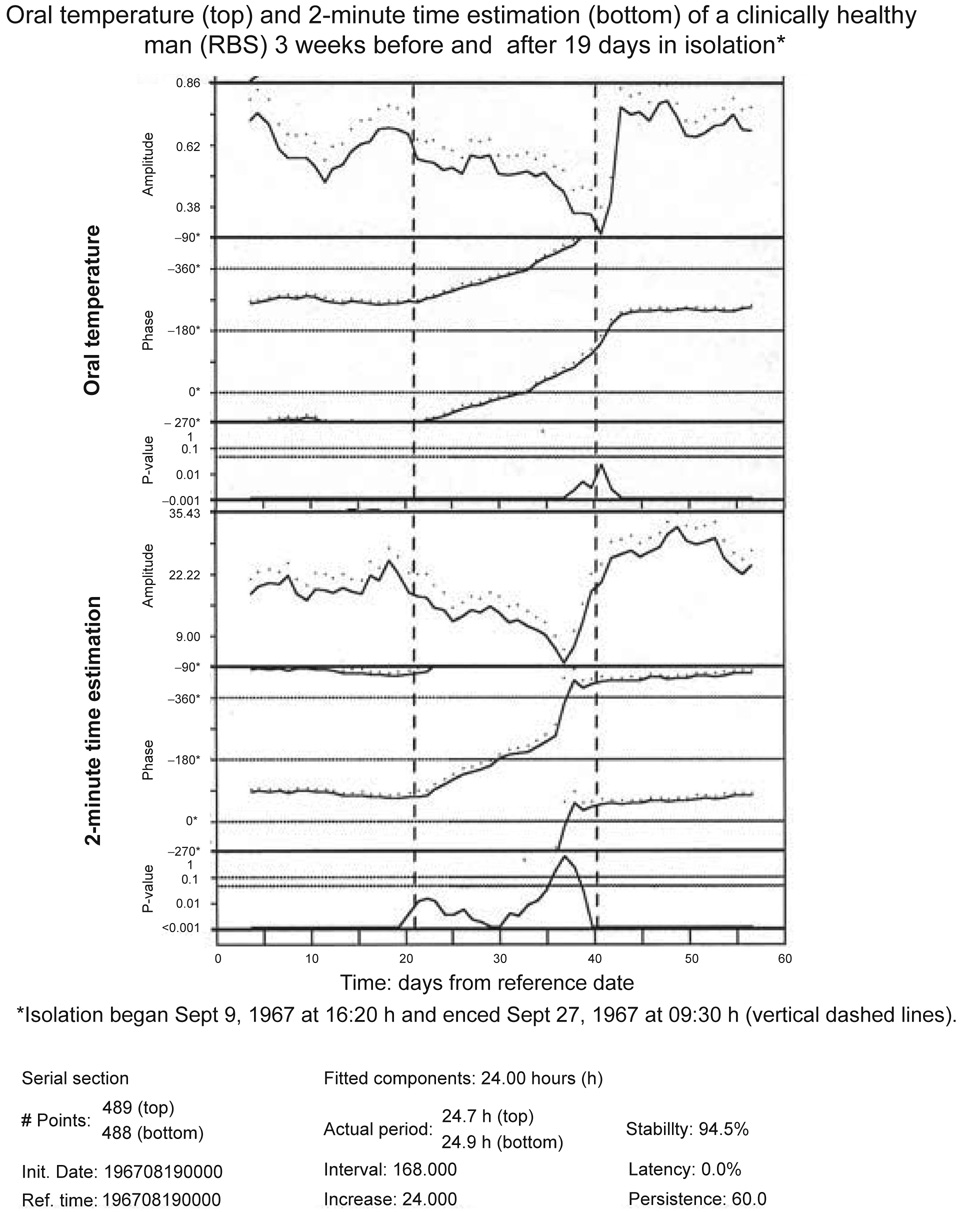Figure 2.
Figure 2a Macroscopic records of the effect of human isolation upon the sleep-wakefulness rhythm. For the individual, the subjectively estimated time of day and calendar date differ greatly in the isolation of a cave (upper row) from that recorded in societal life (lower row). Waking and sleeping of 3 subjects is plotted on top as a function of subjectively estimated time in isolation and at the bottom as complemented by one-way (cave-to-surface only) telephone to a team outside a cave by Michel Siffre (MS) and two other subjects, TS and JL (top). Note that on returning to society, all 3 subjects thought they had spent much less time in isolation than they actually had. JL readjusted her clock-hour and calendar-date estimate following each menstruation, hence the gaps in the figure on the top right (see also Table 2).
Figure 2b The amplitude of a circadian rhythm in a mental function, time (2-minute) estimation, is much smaller under conditions of desynchronization vs. that under 24-hour synchronized conditions. Note that in all subjects, during isolation, there is a peak in the spectrum away from the vertical line that corresponds to exactly 24 hours. In TS and JL, who had continued to record sleep-wakefulness during the days after isolation, the amplitude is much smaller in isolation than under a societal routine.
Figure 2C Chronomic serial sections of oral temperature and 2-minute estimations show time courses during isolation (as compared to before and after isolation) of a gradually decreasing amplitude and a delaying phase. The delaying phase corresponds to a lengthened period. The interval used for analysis (of 168 hours) involves, before and after the transitions, the use of some data from before and after isolation and shows, for time estimation but not for oral temperature, a spurious anticipatory amplitude rise before the end of the isolation span.



